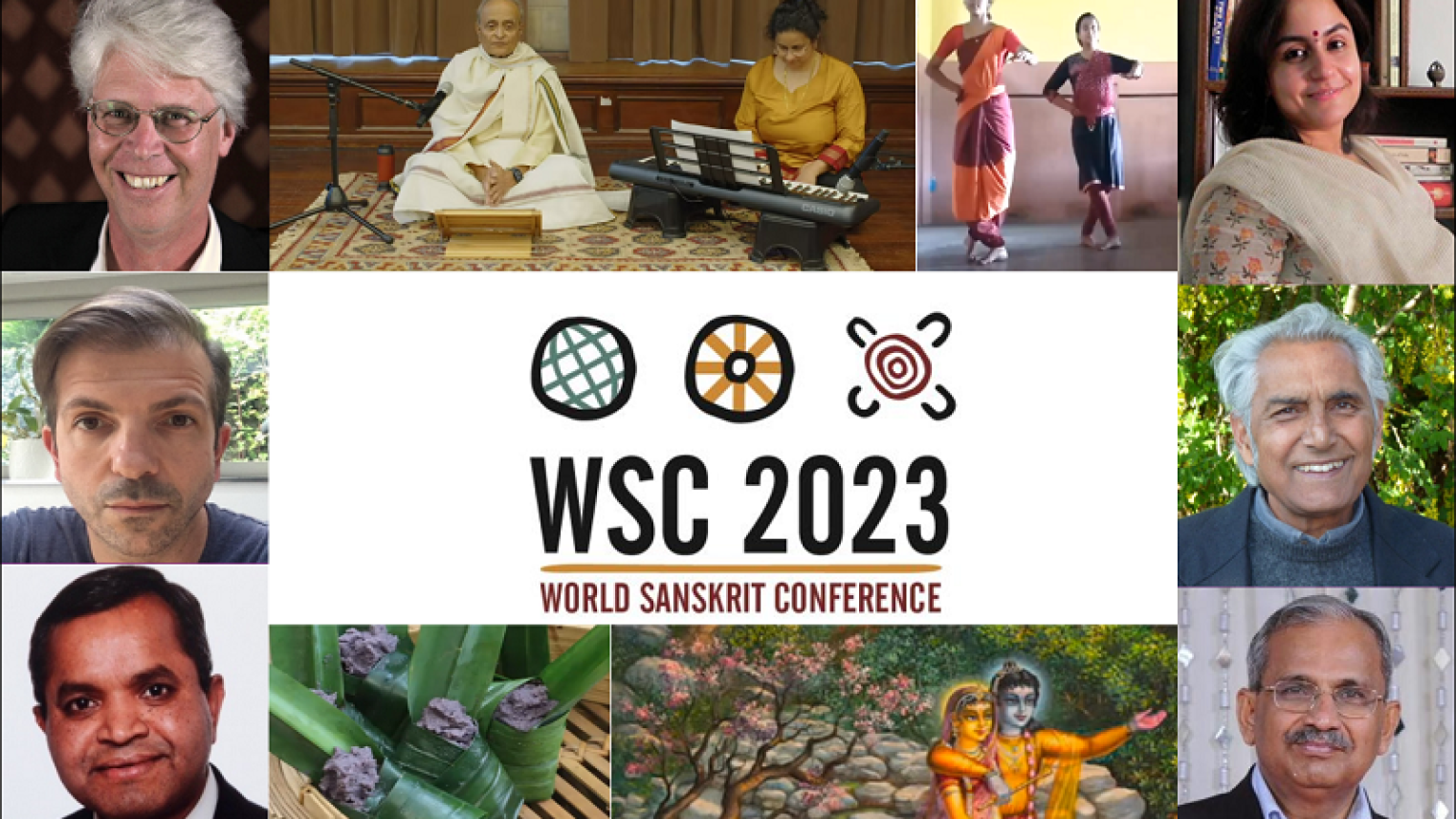A Marriage of Tradition and Technology: Sanskrit, IT and the World Sanskrit Conference

Just a few days before the world entered 2023, news broke globally on an Indian PhD student at the University of Cambridge who had done the impossible—27-year-old Rishi Rajpopat had supposedly decoded a grammatical conundrum dating back 2,500 years, a rule taught by Sanskrit grammarian Panini.
ANU Sanskrit expert Associate Professor McComas Taylor explains, “Rajpopat’s discovery and assumptions have caused quite a bit of controversy in the world of Sanskrit studies, and it will take a while for the scholarly dust to settle.” Taylor further elaborates, “Sanskrit is governed by 4,000 rules of grammar arranged in a set order in a grid pattern. From time to time, two rules appear to clash. To resolve these conflicts, there is an overriding rule that says the later rule should be followed. This has always been understood to mean the lower rule in the grid, but this sometimes results in incorrect forms. Rajpopat suggests that when the grammar says ‘later rule’ it refers to the rule in the grid on the right. This seems to get around the problem.”
This is only the latest in many occurrences that highlight the inherent association that Sanskrit and technology have to date. Growing interest in India and Indian traditions, as well as contested versions of the Indian past for contemporary political reasons, have only continued to ensure that Sanskrit—though an ancient language—is more relevant than ever today. It is critical for people to have direct access to historical sources in Sanskrit, considering the worldwide interest in Buddhism, Hinduism and yoga, all of which need access to source materials in Sanskrit.
The scientific and fixed structure of Sanskrit makes it of interest to information technology. Although Sanskrit saw inception close to 3,000 years ago, the rules and learning methods of the language have remained the same.
Associate Professor Taylor adds, “Information technology has probably saved Sanskrit studies worldwide, and this trend will probably continue. Teaching online enables students from all over the world to join a class at ANU, for example. In the past, a typical first-year class might have had 5–10 students. Now, you can expect about 20–25 on an average!”
WSC 2023: Charting Pathways for the Future of Sanskrit
On the back of his discovery and all the media attention it drew, Rishi Rajpopat presented at the much-delayed (due to COVID)—and therefore much-awaited—World Sanskrit Conference (WSC) at the start of this year.
The symposium showcased the full gamut of Sanskrit studies, from the earliest Vedas, epigraphy, Buddhist and Jaina studies, epics, puranas, right through to the most recent research in digital humanities and application of information technology to classical studies.
Another highlight, among many, was ANU alum Ian McCrabb’s presentation. He gave a wonderful demonstration of a package for researching inscriptions, including the capacity to view and manipulate digital images in three dimensions. He showed a digital image of a 2,000-year-old cup that users can turn in different directions, almost as well as holding it in their hands. Click [here] (https://vimeo.com/765122342/12bdcfbb65) to view his presentation.
Associate Professor Taylor spearheaded the organisation of this year’s conference, originally meant to be hosted in person at The Australian National University, Canberra. The 18th edition of this premier triennial conference for the discipline of Sanskrit was finally held in 2023, completely online for the first time, deploying a ‘flipped presentation’ format that enabled all presentations for the conference to be prepared and uploaded a month in advance as videos or PDFs. This enabled delegates to watch or read the presentations before each session was held so that the live sessions were dedicated to discussion on the specific themes.
About 400 registrations, 300 presenters and 50 sessions constituted the global symposium, featuring thought leaders, scholars, poets, and performing artists, including a special performance—by Pandit Dr Ananth Rao, accompanied by Dr Aditi Rao, with a special contribution from Gumbaynggirr and Yuin woman, Cianna Walker—a traditional story from the great Indian epic, the Rāmāyaṇa, as told in English and Sanskrit.